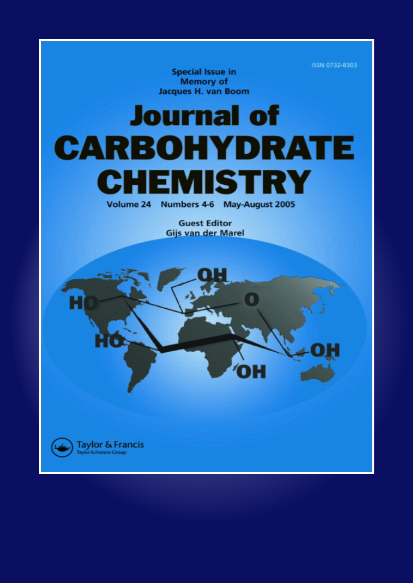Betacoronaviral lectins: Identification through a genomic search—A structural and evolutionary biology perspective
IF 2.2
4区 化学
Q4 BIOCHEMISTRY & MOLECULAR BIOLOGY
引用次数: 0
Abstract
Carbohydrate-binding proteins known as “Lectins” play a crucial role in host-pathogen interactions. Most of the viral surface proteins have lectin activity. In fact, they make the first line of communication with the host cells. Recent reports indicating the haemagglutination property and structural evidences of coronaviral protein bound with Sialic acid (Sia) draw our attention to exploring the presence of lectins in the Betacoronavirus genus from reference genomes. We have considered the seventeen reference genomes of different species and subspecies under the Betacoronavirus genus to identify lectin fold/domain(s) types. We have employed three strategies for characterizing lectin fold/domain(s). The strategies include the sequence-based search against the conserved domain database (CDD) and profile HMMER and Structure-based search against Protein Data Bank (PDB) and unified platform of lectins UniLectin3D database. Interestingly, both the identified proteins, namely Hemagglutinin-esterase (HE) and Spike (S) protein, were localized on viral membranes and played a pivotal role in host-pathogen interactions. These protein structures are fabricated by most pliable β-strands forming varied architectures and topologies, such as β-sandwich, jelly-roll fold, β-barrel, β-prism, β-trefoil, β-propeller and β-hairpins. The identified lectin fold/domain(s) were compared with the characterized ones and were docked with Sia using HADDOCK, and the binding affinity was calculated using the PRODIGY server. Molecular docking studies reveal that all the identified lectin fold/domains agree with the Canyon hypothesis. Furthermore, it could be observed that coronaviruses are constantly evolving by shedding their extra baggage. The latter variants were found to have only the lectin domain but not the esterase domain.
冠状病毒凝集素:通过基因组搜索鉴定-结构和进化生物学的观点
被称为“凝集素”的碳水化合物结合蛋白在宿主-病原体相互作用中起着至关重要的作用。大多数病毒表面蛋白具有凝集素活性。事实上,它们是与宿主细胞沟通的第一道防线。最近的报道表明,冠状病毒蛋白与唾液酸(Sia)结合的血凝特性和结构证据使我们注意到从参考基因组中探索β冠状病毒属中凝集素的存在。我们考虑了Betacoronavirus属下不同种和亚种的17个参考基因组来确定凝集素折叠/结构域类型。我们采用了三种策略来表征凝集素折叠/结构域。该策略包括基于序列的保守域数据库(CDD)和基因图谱HMMER的搜索,以及基于结构的蛋白质数据库(PDB)和凝集素统一平台unectin3d数据库的搜索。有趣的是,这两种鉴定的蛋白,即血凝素-酯酶(HE)和Spike (S)蛋白,都定位于病毒膜上,并在宿主-病原体相互作用中发挥关键作用。这些蛋白质结构由最柔韧的β-链构成,形成不同的结构和拓扑,如β-三明治、果冻卷折叠、β-桶、β-棱镜、β-三叶草、β-螺旋桨和β-发夹。将鉴定的凝集素折叠/结构域与已鉴定的进行比较,利用HADDOCK与Sia进行对接,并利用PRODIGY服务器计算其结合亲和力。分子对接研究表明,所有确定的凝集素折叠/结构域都符合峡谷假说。此外,可以观察到,冠状病毒在不断进化,摆脱了额外的包袱。发现后一种变异只有凝集素结构域而没有酯酶结构域。
本文章由计算机程序翻译,如有差异,请以英文原文为准。
求助全文
约1分钟内获得全文
求助全文
来源期刊

Journal of Carbohydrate Chemistry
化学-生化与分子生物学
CiteScore
2.10
自引率
0.00%
发文量
20
审稿时长
1 months
期刊介绍:
The Journal of Carbohydrate Chemistry serves as an international forum for research advances involving the chemistry and biology of carbohydrates. The following aspects are considered to fall within the scope of this journal:
-novel synthetic methods involving carbohydrates, oligosaccharides, and glycoconjugates-
the use of chemical methods to address aspects of glycobiology-
spectroscopic and crystallographic structure studies of carbohydrates-
computational and molecular modeling studies-
physicochemical studies involving carbohydrates and the chemistry and biochemistry of carbohydrate polymers.
 求助内容:
求助内容: 应助结果提醒方式:
应助结果提醒方式:


